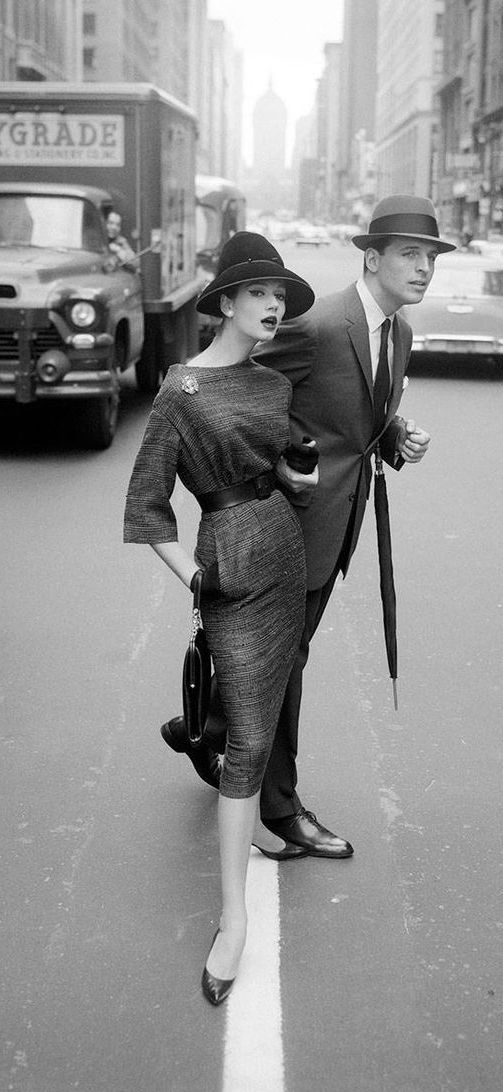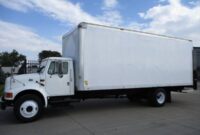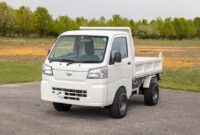1950s Chevy Pickup Trucks For Sale: A Comprehensive Buyer’s Guide pickup.truckstrend.com
The roar of a classic V8, the unmistakable lines of a bygone era, and the promise of open-road freedom – few vehicles evoke such a potent sense of nostalgia and American spirit as a 1950s Chevrolet pickup truck. More than just utilitarian workhorses, these trucks have transcended their original purpose to become highly coveted collector’s items, popular restoration projects, and beloved daily drivers. If you’re considering diving into the vibrant world of classic automotive ownership, seeking out a 1950s Chevy pickup for sale offers a unique blend of timeless style, mechanical simplicity, and a passionate community. This comprehensive guide will equip you with the knowledge to navigate the market, make an informed purchase, and embark on your journey with a piece of automotive history.
The Golden Era: Why 1950s Chevy Pickups Continue to Captivate
1950s Chevy Pickup Trucks For Sale: A Comprehensive Buyer’s Guide
The 1950s marked a pivotal decade for Chevrolet trucks, evolving from rugged, utilitarian machines into stylish vehicles that mirrored the burgeoning post-war optimism and consumer culture. Two distinct design eras defined this decade for Chevy pickups:
-
The Advance-Design (1947-1955 First Series): Introduced in 1947, these trucks were a significant departure from pre-war designs. They featured smoother, more integrated styling, improved visibility with larger glass areas, and a more comfortable interior. Models like the 3100 (half-ton), 3600 (three-quarter-ton), and 3800 (one-ton) are iconic examples. They are easily recognizable by their rounded fenders, five-bar horizontal grille, and often, a split windshield in earlier models. These trucks embody the quintessential post-war American pickup aesthetic.
-
The Task Force (1955 Second Series-1959): Mid-1955 brought a revolutionary redesign with the "Task Force" series, often considered one of the most beautiful truck designs ever produced. These trucks featured a sleek, wraparound windshield (a first for a pickup), an egg-crate grille, hooded headlights, and a more car-like appearance. The introduction of the first factory V8 engine option in 1955 further cemented their appeal. Notable models include the "Apache" (light-duty), "Cameo Carrier" (a premium, car-like truck bed option that foreshadowed the modern pickup), and "Fleetside" beds from 1958 onwards. The Task Force trucks perfectly blended utility with an undeniable sense of style.

Both Advance-Design and Task Force trucks are celebrated for their robust construction, relatively simple mechanics (making them approachable for DIY enthusiasts), and the sheer variety of options and configurations available, catering to a wide range of tastes and budgets.
Understanding the Market: Types of 1950s Chevy Pickups For Sale
When searching for a 1950s Chevy pickup, you’ll encounter a spectrum of conditions and modifications, each impacting price and suitability for your goals:
- Original/Survivor Trucks: These vehicles have largely remained untouched, retaining their factory paint, interior, and drivetrain. While they may show signs of age (patina, minor wear), their originality is highly prized by purists. They offer a glimpse into the past and can be excellent candidates for sympathetic restoration or simply enjoyed as-is.
- Restored Trucks (Period-Correct): These pickups have undergone a full restoration, often "frame-off," bringing them back to their original factory specifications. Every detail, from paint color to engine components, aims for historical accuracy. These are typically the most expensive, offering a show-quality finish and reliable, period-accurate performance.
- Resto-Mods (Restored with Modern Upgrades): Combining classic aesthetics with contemporary comfort and performance, Resto-Mods are incredibly popular. They retain the iconic 1950s Chevy body but often feature modern engines (e.g., LS swaps), automatic transmissions, power steering, power disc brakes, air conditioning, and updated suspension. These trucks offer the best of both worlds: vintage style with modern driveability and reliability.
- Project Trucks: These are the most affordable entry point, often requiring significant work. They might be non-running, rusty, or incomplete. While they demand substantial time, effort, and financial investment, they offer the opportunity to build the truck exactly to your specifications and are a rewarding challenge for skilled enthusiasts.


Key Considerations Before You Buy
Purchasing a classic vehicle is an exciting endeavor, but it requires careful consideration to ensure a successful and satisfying experience.
- Define Your Budget and Goals:
- Budget: Be realistic about not just the purchase price, but also potential restoration costs, maintenance, insurance, and storage. A "cheap" project truck can quickly become an expensive money pit if you underestimate the work required.
- Goals: Do you want a show queen, a reliable weekend cruiser, a daily driver, or a challenging restoration project? Your intended use will dictate the condition and type of truck you should seek.
- Thorough Condition Assessment:
- Rust: This is the arch-nemesis of classic vehicles. Pay close attention to common rust areas: cab corners, rocker panels, floorboards, fender wells, bed sides, and the frame. Surface rust is manageable, but extensive structural rust can be a deal-breaker or extremely costly to repair.
- Frame Integrity: Inspect the frame for cracks, bends, or severe rust. A compromised frame is a major structural issue.
- Drivetrain: If the truck is running, check for unusual noises, leaks, smoke from the exhaust, and smooth shifting. For non-runners, assume a full rebuild is necessary. Consider if the original engine/transmission is important to you or if a modern swap is desired.
- Suspension and Brakes: Look for worn bushings, leaky shocks, and signs of neglect in the braking system. These are crucial for safety.
- Electrical System: Old wiring can be a fire hazard. Check lights, gauges, and accessories.
- Glass and Trim: Replacements can be costly. Check for cracks, delamination, and missing chrome or stainless steel trim.
- Interior: Assess the condition of the seat, dashboard, door panels, and headliner.
- Documentation: Always ask for the vehicle’s title. Verify the VIN matches the title and the truck. Any service records or history of ownership can add value and provide insights into its past.
- Parts Availability: Fortunately, parts for 1950s Chevy trucks are relatively abundant due to their popularity. Reproduction parts, aftermarket upgrades, and used original components are widely available from specialized vendors and online.
Where to Find 1950s Chevy Pickup Trucks For Sale
The market for classic Chevy pickups is robust, offering several avenues for your search:
- Online Marketplaces: Websites like eBay Motors, Hemmings, ClassicCars.com, Bring a Trailer, and Facebook Marketplace are excellent starting points. Filter searches by make, model, and year.
- Specialized Classic Car Dealerships: Many dealerships specialize in vintage vehicles and often have a selection of restored or well-maintained classic trucks. They typically offer higher prices but may provide more transparency and potentially a limited warranty.
- Auctions: Major automotive auctions (e.g., Mecum, Barrett-Jackson) feature high-end restored trucks, while local auctions might offer project vehicles. Be prepared to act fast and have your financing in order.
- Classic Car Shows and Swap Meets: These events are fantastic for seeing trucks in person, networking with owners, and sometimes finding "for sale" signs. Swap meets are great for parts and sometimes complete projects.
- Word-of-Mouth and Forums: Joining online classic truck forums and local car clubs can lead to hidden gems and valuable advice.
The Buying Process: Tips for a Smooth Transaction
- Do Your Homework: Research specific model years, common issues, and market values before you even start looking.
- Inspect, Inspect, Inspect: Never buy sight unseen unless you’re prepared for significant surprises. If possible, inspect the truck in person. If not, arrange for a pre-purchase inspection (PPI) by a qualified, independent mechanic specializing in classic vehicles.
- Test Drive: If the truck is running, always take it for a test drive. Listen for unusual noises, check the brakes, steering, and transmission.
- Negotiate: Most classic vehicle prices are negotiable. Be polite but firm, and base your offer on the truck’s condition and market value.
- Understand the Paperwork: Ensure the title is clear and transferable. Understand your local vehicle registration and insurance requirements for classic cars.
Restoration vs. Driving As-Is: Challenges and Solutions
Deciding whether to restore a truck or drive it as-is presents different sets of challenges:
- Restoration Challenges:
- Cost: A full, professional restoration can easily exceed the truck’s market value.
- Time: Restorations can take months or even years, especially if done part-time.
- Skill: While basic tasks are DIY-friendly, bodywork, paint, and engine rebuilds often require specialized skills.
- Sourcing Parts: While generally good, finding specific NOS (New Old Stock) parts can be challenging and expensive.
- Solutions: Set a realistic budget and timeline, consider a phased restoration, learn new skills, or hire reputable professionals for complex tasks. Join online communities for advice and parts sourcing.
- Driving As-Is Challenges (especially for original survivors):
- Reliability: Older vehicles are prone to breakdowns without regular maintenance and upgrades.
- Safety: Original brakes, steering, and lack of seatbelts may not meet modern safety expectations for daily driving.
- Comfort: No power steering, no A/C, and stiffer suspensions can make long drives uncomfortable.
- Solutions: Prioritize safety upgrades (disc brakes, seatbelts, modern tires), perform thorough preventative maintenance, and consider gradual comfort upgrades (power steering conversion, A/C installation).
Maintaining Your Classic Chevy Pickup
Owning a 1950s Chevy pickup is a commitment to regular maintenance. Understand its mechanical quirks, follow the manufacturer’s recommended service intervals (or more frequently for older vehicles), and address issues promptly. Proper storage (dry, covered) and rust prevention are paramount to preserving your investment.
Price Guide: 1950s Chevy Pickup Trucks For Sale (Estimated Ranges)
Please note: Prices are highly dependent on condition, originality, modifications, location, and market demand. These are rough estimates for general guidance in the North American market (as of late 2023/early 2024). "Project" implies non-running or significant body/frame work needed. "Good" means running, solid, driver quality with minor flaws. "Excellent" means well-restored driver or light show quality. "Show" means professional, frame-off restoration, concours quality.
| Model Year & Type | Condition: Project | Condition: Good | Condition: Excellent | Condition: Show | Notes |
|---|---|---|---|---|---|
| 1947-1954 3100 (1/2-Ton) Advance-Design | $5,000 – $12,000 | $15,000 – $30,000 | $35,000 – $60,000 | $65,000 – $100,000+ | Iconic rounded styling, common |
| 1955 (1st Series) 3100 Advance-Design | $6,000 – $15,000 | $18,000 – $35,000 | $40,000 – $65,000 | $70,000 – $110,000+ | Last of the Advance-Design, sought-after |
| 1955 (2nd Series) 3100 Task Force | $7,000 – $18,000 | $20,000 – $40,000 | $45,000 – $75,000 | $80,000 – $120,000+ | First year of new body, V8 option |
| 1956-1957 3100 Task Force | $8,000 – $20,000 | $22,000 – $45,000 | $50,000 – $85,000 | $90,000 – $130,000+ | Popular years, classic grille |
| 1958-1959 3100 Apache/Fleetside | $7,000 – $18,000 | $20,000 – $40,000 | $45,000 – $75,000 | $80,000 – $120,000+ | New front end, Fleetside bed option |
| 1955-1957 Cameo Carrier | $15,000 – $30,000 | $40,000 – $70,000 | $75,000 – $120,000 | $130,000 – $200,000+ | Rare, premium model, fiberglass bed sides |
| 3600 (3/4-Ton) & 3800 (1-Ton) All Years | $3,000 – $10,000 | $10,000 – $25,000 | $28,000 – $50,000 | $55,000 – $90,000+ | Less common, heavier duty, lower demand |
| Resto-Mods (All Years) | N/A (starts as project) | $35,000 – $70,000+ | $75,000 – $150,000+ | $150,000 – $300,000+ | Highly variable, depends on quality of components and build |
Frequently Asked Questions (FAQ)
Q: What’s the main difference between Advance-Design and Task Force trucks?
A: Advance-Design (1947-1955 1st Series) trucks are characterized by their rounded, pontoon-style fenders, upright cabs, and usually a 5-bar horizontal grille. Task Force (1955 2nd Series-1959) trucks are more modern-looking with a wraparound windshield, flatter body panels, and a prominent egg-crate or wider grille design.
Q: Are parts hard to find for 1950s Chevy pickups?
A: No, generally parts availability is excellent. Due to their popularity, numerous aftermarket companies produce reproduction body panels, trim, interior components, and mechanical parts. Used original parts are also available through salvage yards and online communities.
Q: Can a 1950s Chevy pickup be a daily driver?
A: An original, unrestored truck might be challenging for daily driving due to lack of modern safety features, power accessories, and potential reliability issues. However, a well-maintained original or, more commonly, a "Resto-Mod" with modern upgrades (engine, transmission, brakes, power steering, A/C) can be quite reliable and comfortable for daily use.
Q: What are the most common rust spots to check?
A: Key areas for rust include cab corners, rocker panels, floor pans (especially under the mat), fender bottoms, bed sides and floor, and the lower sections of the doors. Always inspect the frame thoroughly for structural rust.
Q: Is a 1950s Chevy pickup a good investment?
A: While no classic car purchase is a guaranteed financial investment, well-maintained, original, or professionally restored 1950s Chevy pickups have historically held their value well and often appreciated. Project trucks can be an investment if you have the skills to restore them, but the cost of professional restoration often outweighs the market value.
Q: What is a "Resto-Mod"?
A: A Resto-Mod is a classic vehicle that has been restored (or "restified") but with modern mechanical components and creature comforts. This typically includes updated engines (e.g., modern V8s like LS engines), automatic transmissions, disc brakes, power steering, air conditioning, and improved suspension, all while retaining the classic exterior aesthetic.
Conclusion
The allure of a 1950s Chevy pickup truck for sale goes far beyond mere transportation; it’s an invitation to own a tangible piece of American automotive heritage. Whether you envision a meticulous, period-correct restoration, a custom Resto-Mod blending classic charm with modern performance, or a trusty survivor to enjoy as-is, the market offers a diverse range of options. By understanding the different types of trucks available, conducting thorough research, and performing diligent inspections, you can confidently navigate the buying process. Owning one of these iconic trucks is not just about driving; it’s about joining a passionate community, preserving history, and experiencing the timeless joy that only a classic Chevy pickup can deliver. Your dream truck is out there, waiting for its next chapter on the open road.



